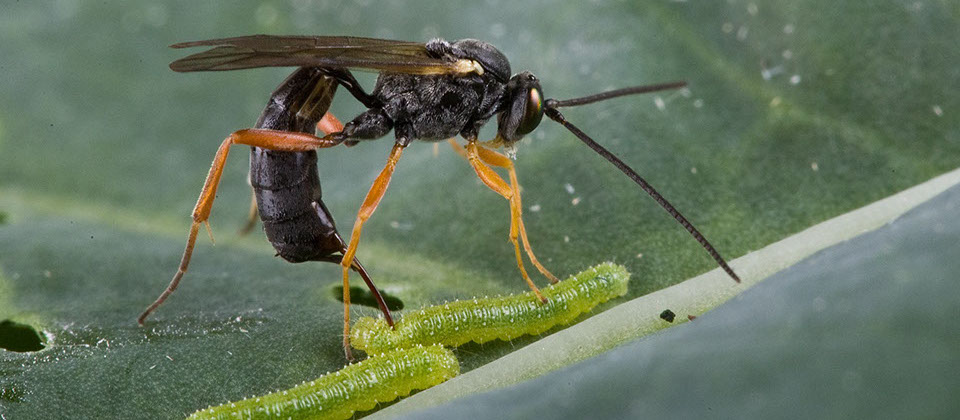DEPARTMENT OF
ENTOMOLOGY

Current Research Interests
Classical Biological Control
Classical biological control projects involve release, establishment and evaluation of the impact of imported natural enemies against invasive species of terrestrial agricultural and aquatic ecosystems. Current classical biological control projects are underway against the red imported fire ant, Solenopsis invicta, southern mole cricket, Scaptericus borelli and tawny mole cricket, S. vicinus, and the aquatic fern, giant salvinia, Salvinia molesta. The biological control project against the fire ant is one component of a collaborative project by the LSUAgCenter Red Imported Fire Ant Management Task Force. We are cooperating with the USDA ARS in the release of the decapitating phorid fly, Pseudacteon tricuspis. We are cooperating with the Department of Entomology at the University of Florida to release and establish a temperate strain of the Brazilian red-eyed fly, Ormia depleta against southern and tawny mole crickets in Baton Rouge and New Orleans. These mole crickets are serious turf and pasture pests. We started a new project in December 2001 against giant salvinia in Cameron Parish in S.W. Louisiana. This aquatic fern is one of the most serious invasive aquatic weeds because of its rapid growth rate and propensity to form dense mats which block light penetration and make the infested area impassable. We are cooperating with USDA APHIS to release the Australian strain of the host specific salvinia weevil, Cyrtobagous salviniae.
Citrus Pest Management
The citrus pest management project involves the development of pest specific, integrated cultural, biological and chemical control programs. Pest management projects are being researched against a number of different citrus pests. A successful classical biological control project was conducted against the citrus leafminer, Phyllocnistis citrella with the encyrtid wasp, Ageniaspis citricola. The pest status of blossom thrips, Frankiniella cephalica and F. tritici, is currently under study to determine if chemical control will enhance yield of Satsuma orange. The biology, ecology, phenology, transmission of the yeast, Nematospora coryli, and chemical control of leaf-footed bugs, Leptoglossus zonatus and L. phyllopus are under study in the laboratory and field. The pest status of leaf-footed bugs has recently changed from occasional to serious pest of Satsuma orange because they transmit N. coryli which causes a concealed internal dry rot of fruit. Acaracides are being evaluated against rust mite, Phyllocoptruta oleivora to give the growers additional options to control this important pest.
Migration
Migration research on highly mobile noctuid pests has focused on determination of the origin of these pests and also the role of the environment in induction of a physiologically and behaviorally defined premigratory condition. Genetic markers and atmospheric backtracking have been used to try to pinpoint the origins of migratory populations of fall armyworm, Spodoptera frugiperda, velvetbean caterpillar, Anticarsia gemmatalis, and true armyworm, Pseudaletia unipuncta. We have examined and characterized physiological and behavioral aspects of pre- and post-migratory populations of the true armyworm in Texas and our research supports a classical reproductive flight syndrome in the spring.
